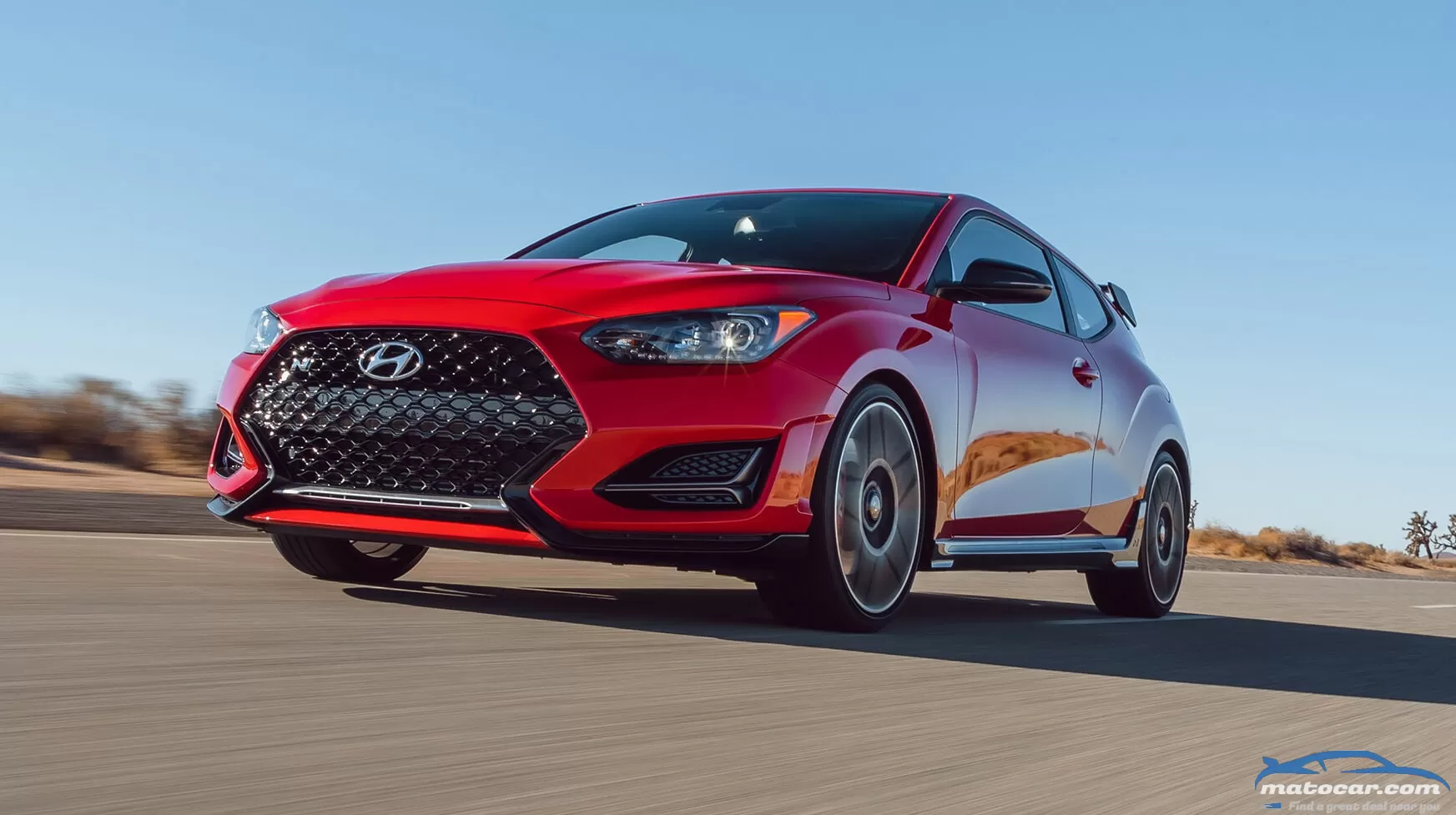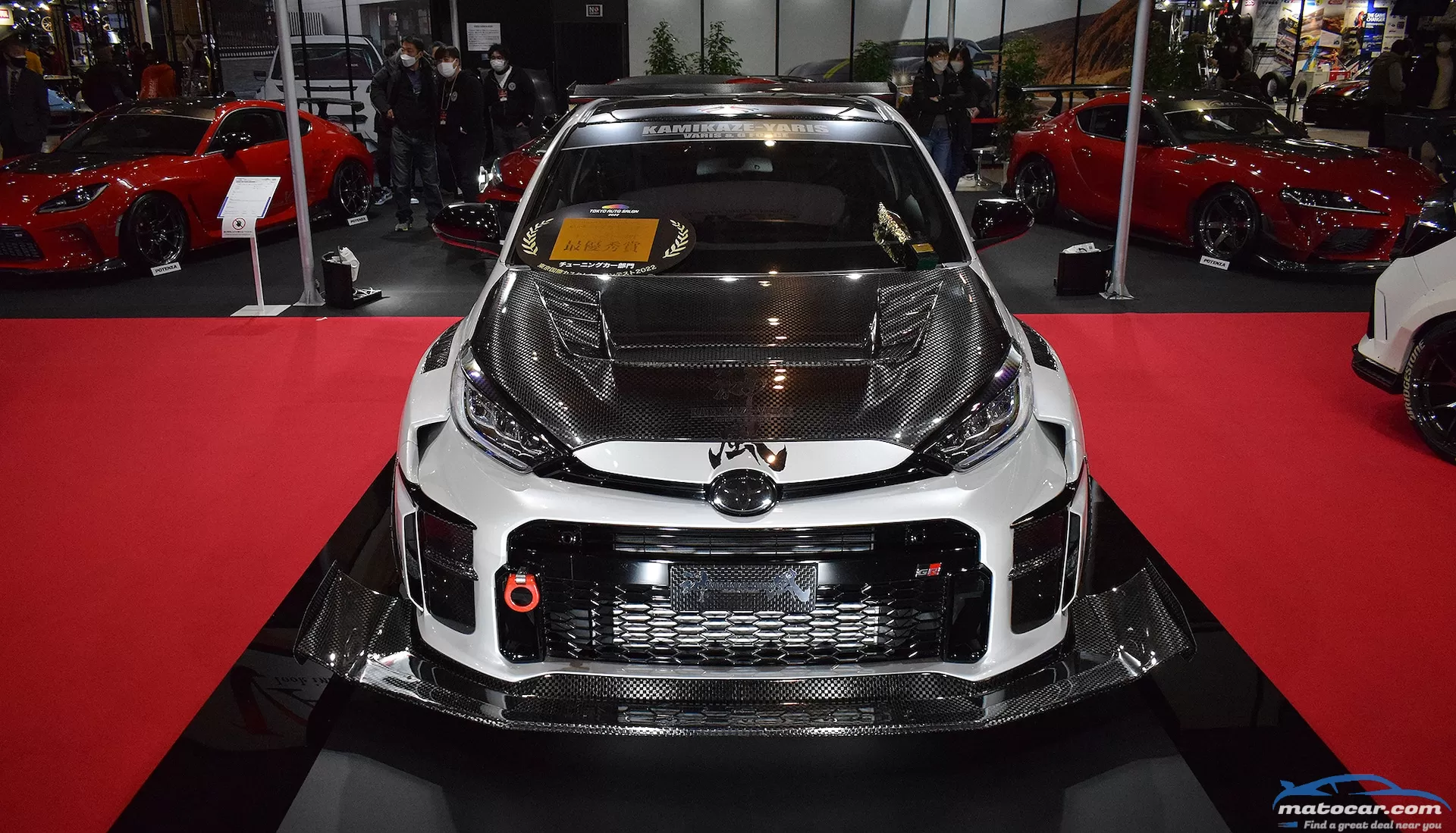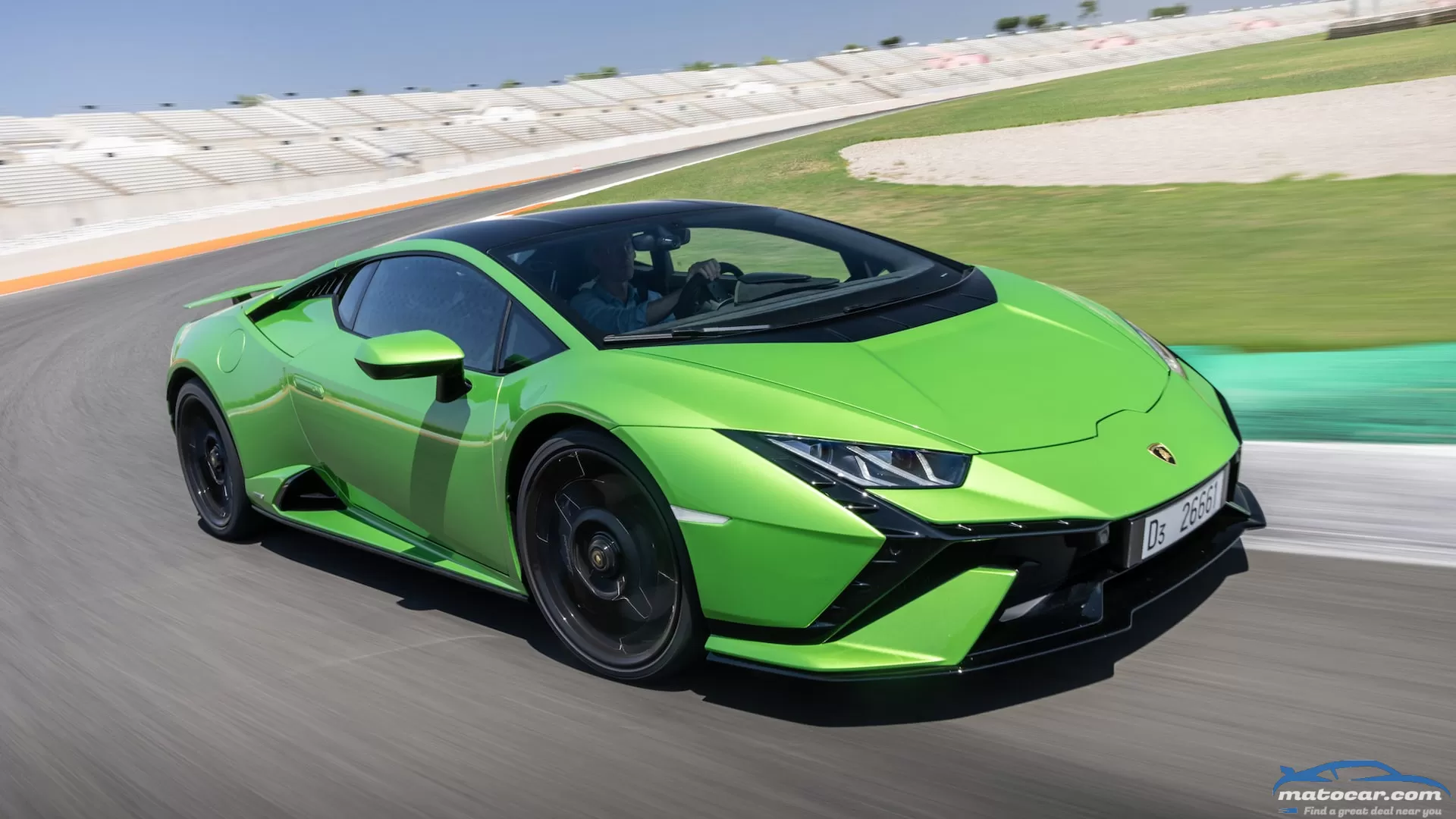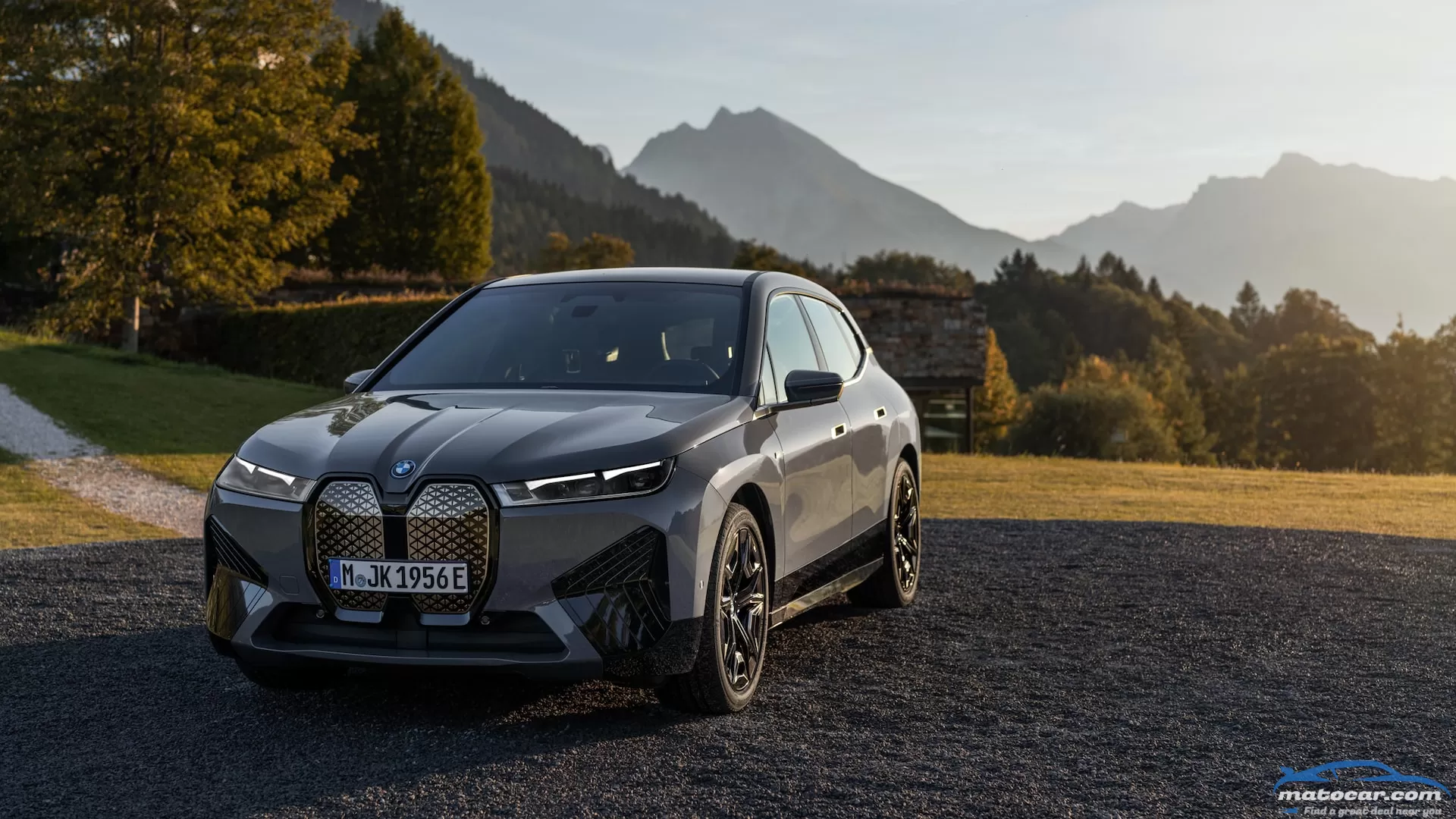2021 Hyundai Veloster N PVOTY Review: Ever Improving

Pros
- More refined handling
- Excellent dual-clutch transmission
- Bargain price
Cons
- Brakes need more cooling for track work
- Unnecessarily complicated performance customization screen
- Way too stiff in anything but Comfort mode
You may also like
The 40th Tokyo Auto Salon started off with modest fanfare on Friday, as the typical media day routine of press conferences, product debuts, prototype reveals, and the ever-popular TAS staple of pinup girls and race queens transpired.While day two typically devolves into a more frenzied state due to the doors being opened to the public, the COVID situation caused people to mill about in a very civilized manner, as we all social distanced as best as possible. Mask mandates as well as the downloading of a Bluetooth-dependent app that collected data from all nearby smartphone devices to record exposure risks were required for all visitors.As for the contents of the show itself, both the Gazoo Racing GT3 Prototype and the mildly modded orange Fairlady Z at the Nissan booth seemed to maintain the strongest grip on visitor interest, with lengthy lines to get in and see both vehicles remaining in effect nearly up to closing time each day.Surprise encounters included bumping into our old friend Mr. GT-R Hiroshi Tamura, meeting Yamamoto-san of Racing Factory Yamamoto to discuss his bonkers Figaro/S2000 rocket ship (which took home 3rd place for best tuning car), and catching up with the ever enthusiastic Sakamoto-san of Garage Active for some long overdue GT-R talk.All InclusiveBut perhaps the most pleasant surprise was seeing all of the smaller shops and independent builders in attendance. For beneath all of the glitz, glamour, girls, and gregariousness of this event lies a far more meaningful message. Tiny operations, each with a few employees, striving to do things differently and thinking outside of the box are how this whole show started 40 years ago. Today, many of them remain the unsung heroes of all things JDM, who, in our eyes deserve just as much recognition as the big names in the industry.And while companies like Varis secured first place for its race-ready "Kamikaze Yaris," and the tastefully modded Nissan Fairlady Z stole the show for best concept car, it was an off-road van build that surprised people the most when it came to award time.A 4x4 specialty shop by the name of Outclass Cars took home top honors for best family car of the show with a Toyota Alphard van unlike any other. Converted with imported Lexus LM minivan parts sourced from Taiwan and outfitted with a slew of one-off Outclass 4x4 focused components, then topped with a GIWORKS JAPAN rooftop tent and cargo carrier, this build was a real stand-out at the show this year for the public, the press, and apparently the judges as well.It was this very van that made our coverage of Tokyo Auto Salon 2022 possible, as the Tokushima-based crew graciously allowed me to hitch a ride to and from the event in their capable 4x4 caravan. The return trip even allowed room for two more hitchhikers: A gleaming trophy, and a plaque proudly decreeing that a 4x4 grocery-getter could indeed be considered one of the best builds in all of Japan. Talk about icing on that JDM cake!With that said, here are some of the other highlights from the three-day affair trying to get back to full speed after the cancellation of last year's event. Here's hoping to 2023 continues the momentum.This Fairlady Z concept, which combines some old school Z-car with the new Z's already retro-heavy aesthetic, certainly made its mark on the show. The reworked front fascia, mild flares, and orange/black treatment offer a nice clash of old and new without moving too far away from the modern Z.Your eyes aren't deceiving you, this is in fact a six-rotor swap! Tucked neatly into the engine bay of a Eunos Cosmo, this build began in October and though it's not 100% complete just yet, it's getting close. Many of the parts are sourced from Australia, and the plan is to finish it up by spring and put it to the test in both drag and time attack race events.The off-road market in Japan, much like the U.S., is at an all-time high. Interest in rugged options from the aftermarket have increased dramatically and personalized compact offerings, like this GReddy-equipped Suzuki Jimny, are all the rage.The FD chassis RX-7 has long served as a staple at the Tokyo Auto Salon and that won't be changing anytime soon. The fan favorite's classic body lines, capable chassis, and roomy engine compartment make it a tuning platform with almost limitless options. This version was widened and fitted with an array of vents as well as Vision Type DC mirrors that are typically attached to Honda builds.There's really nothing subtle about the new GR Yaris, so it only makes sense that Varis Japan would go wild with its aero add-on, aptly naming the creation "Kamikaze." The hood, portions of the bumper, lip, side skirts, rear diffuser, and wing use a very large carbon fiber weave pattern like that of the brand's side project, Solid and Joker, which we saw back in 2017.Bulked up fenders feature vents on the front pair, similar to Varis' FK8 Type R kit.With so much talk about the new Toyota GR86, many forgot about the previous generation 86—but not this builder. Tubbed front fenders surround a highly-polished single-turbo 2JZ swap outfitted with custom hard lines and a tucked engine harness.Subaru's STI E-RA Challenge Project, which relies on four electric motors to generate just over 1,000 hp, was a show within the show.Exotics were also on hand in pretty large numbers. Liberty Walk brought quite a few cars to TAS, including this Ferrari sporting its signature wide body aero and vented carbon fiber hood.Other LBWK demo cars included this trio of yellow—a Lamborghini, Corvette, and Mclaren.On the wild side, this sixth-generation Toyota Celica received a (partial) MkV Supra front end conversion.
lamborghini huracan Full OverviewAge has not wearied it, nor the years condemned. The 5.2-liter V-10 that powers the 2023 Lamborghini Huracán Tecnica may trace its origins back to a time when the iPhone was an idea and Amazon a work in progress, but one full-throttle acceleration run, one hot lap of a racetrack, one flat-out blast along a challenging back road is enough to convince you: It's one of the all-time greats. An engine for the supercar gods.It roars and bellows and shrieks and snarls, this engine, performing a heroic horsepower opera that's neither muffled by turbos nor synthesized by electric motors, and it punches harder than Tyson Fury in a bad mood. It's the reason the Tecnica will be wistfully remembered when we're all whooshing around in mega-horsepower EVs.But it's not the sole reason.The genius of the Huracán Tecnica is simple, though its execution is rather more nuanced. The Tecnica combines the 631-hp and 417-lb-ft version of the V-10 from the edgy, track-focused Huracán STO with a rear-drive, rear-steer chassis that's been tuned for all-around road work. The cabin can be trimmed with the most luxurious materials in the Lamborghini catalogue and offers all the connectivity and functionality expected in a modern car—from Apple's CarPlay to Amazon's Alexa—controlled via a redesigned user interface that will also call up arcane nuggets of performance data on demand.All that is wrapped in bodywork massaged to give the Tecnica a longer, lower profile, a visually wider stance, and more sophistication to its menace. Think Tyson Fury in a Zegna suit.There's a new front bumper with the black Y-shaped graphic derived from the wild Terzo Millennio concept. The revised greenhouse riffs on that of the limited-edition, track-only Essenza SCV12. At the rear is a reshaped bumper and diffuser, and the lower edges of the rear fenders have been pulled inward to expose more of the rear tires. Two massive hexagonal exhaust outlets hint at the bellicose ferocity lurking in the engine bay.Both the front and rear hoods are carbon fiber, the latter with a clear section that exposes the top of the V-10, and both contributing to a 22-pound reduction in weight over the Huracán Evo RWD. A vertical rear window nestles between the flying buttresses that extend rearward over the air intakes.There's improved function in the new form, too. The new front bumper design incorporates an air curtain and directs air through the front wheel wells to increase downforce and improve brake cooling. The fixed rear wing is a major contributor to the 35 percent increase in rear downforce compared with the Huracán Evo RWD, along with a 20 percent reduction in drag.Compared with the manic STO, it only takes a mile or so behind the wheel to understand that the Tecnica is a kinder, gentler Huracán. The revised suspension means the ride won't shake the fillings from your teeth and it's nowhere near as noisy at cruising speeds on the freeway, especially with the car in the softest of its three drive modes, Strada, and the seven-speed dual-clutch transmission left in Auto. But that's just the velvet glove over the iron fist.Thumbing the little button at the base of the third spoke on the steering wheel into Sport mode gives the powertrain a triple shot of espresso. Throttle response is sharper, and shift times shorter. And the electronics that control the car's adaptive shocks and the rear-steer, traction control, and torque-vectoring systems get a revised set of orders from the Lamborghini Dinamica Viecolo Integrata (LDVI) system, with its accelerators and gyroscope sensors at the Tecnica's center of gravity that monitor lateral, longitudinal and vertical loads, as well as body roll, pitch, and yaw.The result is a car that feels more urgent, more focused, and yet more playful; willing to oversteer if you want to showboat on the track, but still possessed of terrific traction and stability when you need it.Corsa mode isn't quite the Spinal Tap experience it is in the Huracán STO, but the Tecnica with its race-face on is still a weapon on the track, especially when equipped, as our test cars were for the lapping sessions, with the optional Bridgestone Potenza Race tires, which are treaded and street-legal but, as Lamborghini engineers coyly put it, "are for dry roads."In Corsa, the powertrain is calibrated to provide optimized track-oriented throttle response and the fastest gearshifts, and the omniscient LDVI instructs its electronic minions to deliver maximum lateral and longitudinal grip. Part of the Corsa protocol includes locking the rear-steer system. Shutting down what is pitched as a dynamic driving aid might seem slightly counterintuitive, but it delivers purer, more precise handling at the limit.If you're good enough.That's not to say the Huracán Tecnica will throw you under the bus if you get things wrong. It won't; this is as sweet a Lambo at the limit as has ever been built. But as in the Huracán GT3 race car, nailing a truly quick lap time means finding the balance between the vivid front-end response and the rush of power and torque to the rear wheels when get on the gas.Yes, the LDVI is there, working furiously in the background to support you, and it's nowhere near as fine a balancing act as in the race car. But this subtly analog element to taming the Tecnica; the sense that extracting the last little bit of the car's performance is down to you, is a big part of this Lambo's appeal.You can use Corsa mode on the road, of course, but Sport is the best all-round setup for a blast through the twisties. There's a little more support from the traction and stability control—useful when you can't see that greasy patch around the next corner—and the rear-steer system delivers both agility and stability. The direct ratio steering, uncorrupted by a driven front axle, is a joy; precise and communicative, with just the right amount of weighting.Priced at $239,000, the Tecnica is the sweet spot of the Huracán lineup. It gives you nearly all the thrills of the borderline silly STO in a mature, grown-up supercar you can realistically drive every day. This Huracán is a feel-good Lamborghini, one that makes you smile every time you hit the gas.It's also a Lamborghini that feels like the end of an era.An all-new Huracán replacement is scheduled to appear at the end of 2024. It's rumored to be powered by a mild-hybrid twin-turbo V-8. Oh, it will undoubtedly be better supercar than the Tecnica by any objective measure; quicker, with even more confidence-inspiring handling. But we'll miss the 5.2-liter V-10's sound and fury. Especially the sound.Looks good! More details? 2023 Lamborghini Huracán Tecnica Specifications PRICE $239,000 LAYOUT Mid-engine, RWD, 2-pass, 2-door coupe ENGINE 5.2L/631-hp/417-lb-ft DOHC 40-valve V-10 TRANSMISSION 7 -speed dual-clutch auto CURB WEIGHT 3500 lb (MT est) WHEELBASE 103.2 in L x W x H 179.8 x 76.1 x45.9 in 0-60 MPH 3.2 sec (mfr est) EPA FUEL ECON, CITY/HWY/COMB N/A ON SALE Now Show All
BMW calls the iX its technology flagship, but the 2023 BMW iX M60 aims to be the company's high-performance technology flagship. Built as a true M vehicle, the iX M60 features dual motors for a combined 610 horsepower while still achieving nearly 300 miles of range. The sportier EV crossover won't be all hardcore performance thanks to its air suspension system, innovative interior features, and connectivity that you've come to expect from the Bavarian luxury brand.High-Tech ChassisThe iX M60 leverages the latent performance potential of the relatively lightweight iX xDrive50 model, utilizing an aluminum spaceframe chassis, carbon fiber unibody, and carbon fiber reinforced panels for the roof, side, and rear sections. All that helps it com in at 5,769 pounds, with a large portion residing down low in the battery pack. Those exterior panels can also come in seven different colors, with Alpine White as standard and range from Dark Graphite Metallic, Phyronic Blue Metallic, Blue Ridge Mountain Metallic, Storm Bay Metallic, Oxide Grey Metallic, and Aventurin Red Metallic.A double-wishbone setup is found up front, while the rear is a five-link. All four corners are suspended by an air suspension system with electronically controlled dampers, which take roll, acceleration, deceleration, vehicle speed, and even steering input to make sure the body stays planted. That damper rate is further mapped differently depending on the "My Modes" setting, which is changed by a button on the center console. Steering is assisted by BMW's Servotronic with a variable ratio steering rate. This all is designed to deliver optimum handling and feel while also keeping the M60's height correct at any speed and any load. You can also adjust the height of the body manually if you think you need extra ground clearance or not.The wheels and tires the iX M60 comes with will, of course, also play a role in upping its performance over an iX xDrive50. The standard wheel is a 21-inch design wrapped in 255/50R21 sized tires on all four corners. The optional wheel is a half-inch-wider, 22-inch-diameter aluminum wheel with a unique aerodynamic design and Titanium Bronze color with a 275/40R22 tires. Behind either wheel are blue-painted, Brembo-made brake calipers with the "M" logo, letting bystanders know that you have the highest performance braking yet fitted to a stock BMW EV. It's a fixed four-piston caliper for each front wheel and a fixed two-piston caliper on each rear.High-Tech InteriorInside, every iX M60 will come standard with BMW's Live Cockpit Professional and Natural Interaction, which allows you to activate certain functions via your voice or even by gestures, much like your smartphone. Giving you and your occupants theater quality sound is a standard Bowers and Wilkins Diamond Surround Sound system. The headliner comes in Anthracite as standard but you do get five different interior colors to choose from. The Oyster, Mocha, and Black colored interiors come in perforated SensaTec synthetic materials but if you want the feel of real hide, you can get perforated leather coverings in Amido or Castenea Chestnut colors.Both the front passenger and the driver are treated to Active Seat Ventilation, but the hot part is the Radiant Heating Package. This system warms not only the seats, steering wheel, and armrests but also the door panels and dashboard, as found in some Mercedes products these days. You'll still get more traditional hot air to defrost the windows courtesy of an efficient heat pump system. A thermally insulated windshield helps keep that warm air in. Occupants are also surrounded by ambient lighting with LED strips located between the door cars and windows and in the Panoramic Sky Lounge LED roof.Fifth-Generation Rear MotorNow, we get to the fun bit: the e-motors that drive the BMW iX M60. BMW employs a three-phase AC synchronous motor out back, which according to BMW allows for more energy density, faster switching frequency, and better heat management—all of which translate to higher RPM, more horsepower, and more torque. More power and torque, indeed—the standard combined output of both the front and rear motor is 532 hp and 749 lb-ft of torque. Individually, the front motor provides 255 hp while the rear motor provides 483 hp in normal operation. In Sport Boost mode, that jumps to 610 hp while Launch Mode slams you in the back of your seat with 811 lb-ft of torque.Battery Type and CapacityThe iX M60 employs a lithium-ion battery pack with a 106.3-kWh nominal power capacity. It's capable of Level 2 AC charging at up to an 11-kW charging rate for a 0-100 percent charge in just over 10 hours. However, it is also DC fast charge capable at up to 250 kW, going from 10-80 percent full in about 35 minutes. In all, you'll get 280 miles of range out of the iX M60 on a full charge, according to BMW's preliminary EPA rating.If you're looking for the current epitome of EV performance with a focus on German build quality, you're going to want to take a look at the 2023 iX M60. At the very least, you're getting a taste of BMW's bright and powerful future. The 2023 BMW iX M60 is set to launch in June of 2022 with a base price of $106,095.




0 Comments